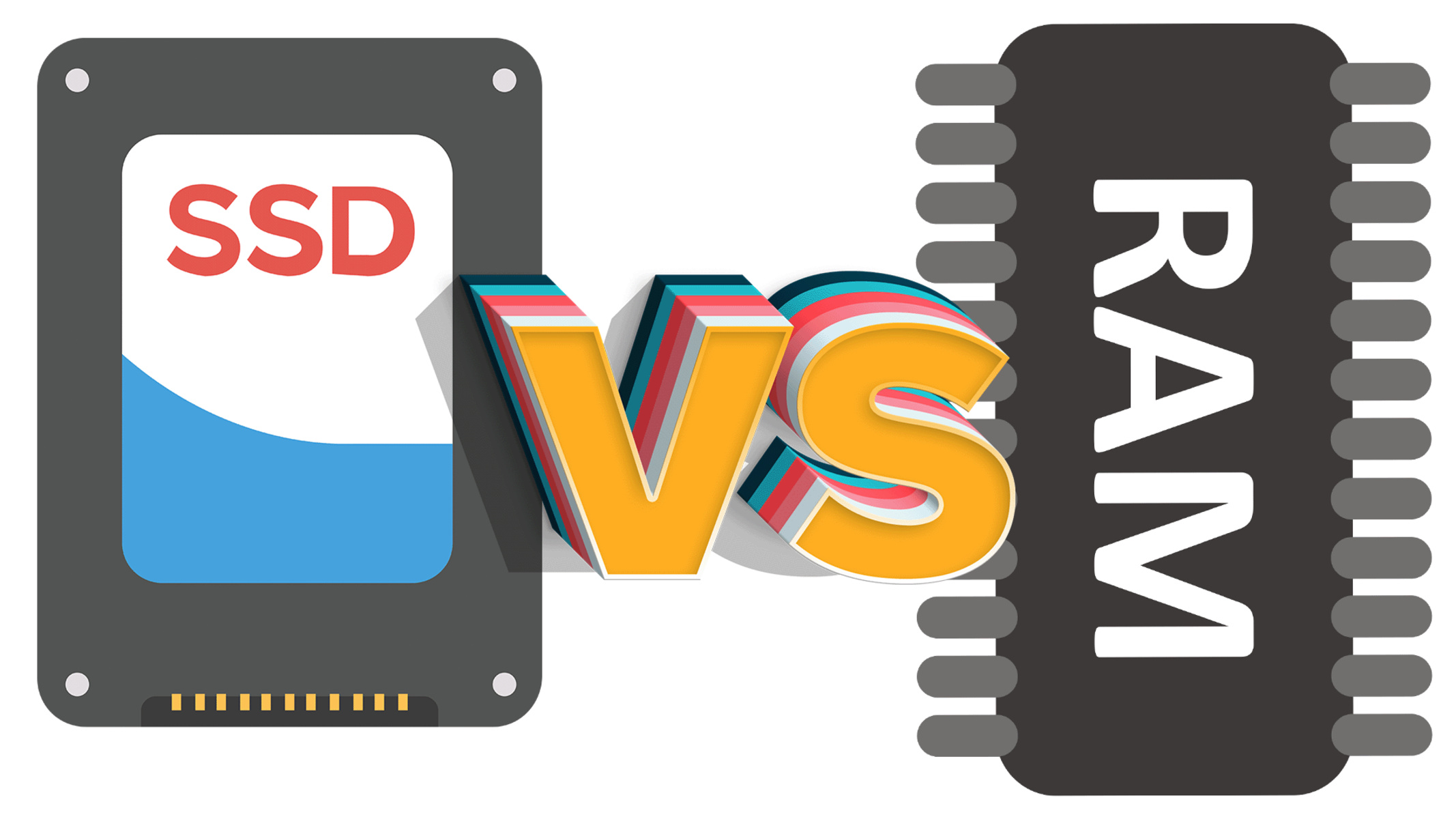Introduction
Virtual machines (VMs) have revolutionized the way businesses operate in the digital age. Gone are the days when companies had to rely exclusively on physical servers to run their applications and store their data. With the emergence of virtualization technology, businesses now have the option to run multiple virtual machines on a single physical server, providing a range of benefits that were previously unimaginable.
Virtual machines mimic the functionality of a physical computer by using software to create a virtualized environment. This allows for the allocation of resources, such as processing power, memory, and storage, to be shared among multiple VMs, making more efficient use of hardware resources. In this article, we will explore the benefits of using a virtual machine versus a physical one, and how this technology is transforming the IT landscape.
By employing virtual machines, businesses can reduce their hardware costs significantly. Instead of purchasing separate physical servers for each workload or application, multiple virtual machines can be consolidated onto a single physical server. This consolidation not only minimizes the physical footprint, but also reduces energy consumption and lowers cooling costs.
Furthermore, virtual machines offer simplified IT management. With a virtualization platform, administrators can easily provision and manage virtual machines through a centralized interface. This streamlines the deployment of new applications, improves resource allocation, and simplifies the overall IT infrastructure. Additionally, virtual machines allow for efficient workload migration, enabling companies to effortlessly move VMs between different physical servers without disrupting operations.
Another key benefit of using virtual machines is the increased flexibility and scalability they provide. With physical servers, scaling up or down requires additional hardware procurement or decommissioning. In contrast, virtual machines can be dynamically adjusted in terms of resources, allowing businesses to rapidly respond to changing demands.
Reduced Hardware Costs
One of the primary advantages of using virtual machines is the significant reduction in hardware costs. In traditional IT setups, each application or workload would require its own dedicated physical server. This not only increases the initial investment in hardware but also results in additional expenses for maintenance, power consumption, and cooling.
Virtual machines allow for the consolidation of multiple workloads onto a single physical server. By leveraging the power of virtualization, businesses can optimize resource utilization and reduce the number of physical servers needed. This consolidation leads to cost savings in terms of hardware purchases, as fewer servers are required to handle the same workload.
Furthermore, virtual machines enable businesses to make better use of their existing infrastructure. Rather than investing in separate servers for each application, companies can leverage a virtualization platform to run multiple virtual machines on a single server. This allows for efficient utilization of hardware resources, maximizing the return on investment.
Additionally, virtual machines contribute to reduced power consumption and cooling costs. With fewer physical servers in operation, there is a decreased demand for electricity and cooling to maintain optimal server performance. This not only lowers energy bills but also contributes to a greener and more sustainable IT environment.
Another cost-saving aspect of virtual machines is the ease of scalability. In a physical server environment, scaling up requires the purchase of new hardware, which can be a significant expense. With virtualization, businesses can scale up or down by allocating or reclaiming resources from virtual machines. This flexibility allows companies to align resource provisioning with their actual needs, avoiding unnecessary spending on unused hardware.
In summary, the use of virtual machines offers substantial cost savings for businesses. By consolidating workloads onto fewer physical servers, organizations can reduce hardware purchasing and maintenance expenses. Virtualization also enables the efficient use of existing infrastructure, leading to lower power consumption and cooling costs. Additionally, the scalability of virtual machines allows businesses to align resource allocation with their needs, avoiding unnecessary hardware investments. These cost advantages make virtual machines an appealing option for businesses looking to optimize their IT infrastructure and minimize expenses.
Simplified IT Management
One of the key benefits of using virtual machines is the simplification of IT management. In traditional physical server setups, managing multiple servers can be complex and time-consuming. Virtualization technology streamlines the management process, making it more efficient and less cumbersome.
With virtual machines, administrators can utilize centralized management tools to monitor and control the entire virtual infrastructure from a single interface. This allows for unified management of all virtual machines, regardless of their physical location. By having a centralized view, administrators can easily allocate resources, monitor performance, and troubleshoot issues, saving valuable time and effort.
Virtual machines also offer quick and easy provisioning, allowing administrators to rapidly deploy new virtual machines as needed. This eliminates the need for manual installation and configuration of physical servers, which can be a time-consuming task. With just a few mouse clicks, administrators can create new virtual machines, specify resource allocation, and install operating systems and applications, significantly reducing deployment time.
Moreover, virtual machines enable seamless workload migration between physical servers. This feature allows businesses to perform server maintenance, upgrade hardware, or balance resource utilization without interrupting critical applications. Administrators can easily move virtual machines from one physical server to another, ensuring continuous uptime and minimizing service disruptions.
Another aspect of simplified IT management is the ease of managing snapshots and backups in virtual machines. Snapshots capture the state of a virtual machine at a specific point in time, allowing administrators to revert back to that state if necessary. This is particularly useful during software testing or when dealing with sensitive data. Additionally, virtual machines can be easily backed up, making it simpler to implement disaster recovery plans and ensure data integrity.
In summary, virtual machines provide a simplified IT management experience. Centralized management tools and interfaces streamline resource allocation, monitoring, and troubleshooting. Quick and easy provisioning of virtual machines accelerates deployment time and reduces manual configuration efforts. Workload migration between physical servers allows for server maintenance and upgrades without service interruptions. Lastly, snapshots and backups simplify disaster recovery and mitigate data loss risks. The simplified IT management capabilities offered by virtual machines enable businesses to efficiently manage their infrastructure and allocate resources effectively.
Increased Flexibility and Scalability
Virtual machines offer businesses increased flexibility and scalability, allowing them to adapt quickly to changing demands and requirements. Unlike traditional physical servers, virtual machines can be easily scaled up or down based on resource needs, providing a dynamic and responsive IT environment.
With virtualization technology, businesses can allocate and reallocate resources to virtual machines as needed. This means that if a particular workload requires more processing power, memory, or storage, administrators can easily adjust the resource allocation for that specific virtual machine. This flexibility enables businesses to respond swiftly to changing business needs without the need for additional hardware purchases.
In addition, virtual machines allow for efficient resource utilization. With traditional physical servers, there is often over-provisioning of resources to ensure optimal performance. This leads to underutilization of hardware and wasted resources. Virtualization enables businesses to provision resources precisely and allocate them only where and when they are needed. This not only improves resource utilization but also reduces costs associated with over-provisioning.
Furthermore, virtual machines enable the seamless migration of workloads between physical servers. This feature allows businesses to balance the load across servers, optimize resource utilization, and perform hardware maintenance or upgrades without disrupting critical applications. With virtual machine migration, businesses can ensure continuity of operations and minimize service interruptions.
Virtual machines also facilitate the testing and development process. By creating clones or snapshots of virtual machines, businesses can easily create isolated environments for testing new software or updates. This eliminates the need for dedicated physical servers or potential conflicts caused by shared resources. Developers can work in parallel, test different configurations, and roll back changes if needed, enhancing productivity and reducing the risk of production outages.
Moreover, virtualization technology enables businesses to leverage cloud computing. Virtual machines can be seamlessly moved between on-premises infrastructure and cloud providers, offering businesses the flexibility to scale their operations based on their specific needs. This hybrid approach allows organizations to take advantage of the cloud’s scalability and cost-effectiveness while maintaining control over critical data.
In summary, virtual machines provide businesses with increased flexibility and scalability. Businesses can easily allocate and adjust resources based on their needs, minimizing resource wastage. The ability to migrate workloads between physical servers allows for load balancing and uninterrupted operations. Virtual machines also facilitate testing and development, providing isolated environments for software updates and reducing production risks. Lastly, virtualization technology enables businesses to adopt a hybrid approach by leveraging both on-premises and cloud resources. The increased flexibility and scalability offered by virtual machines empower businesses to adapt quickly to changing demands and optimize resource utilization.
Enhanced Security and Isolation
Virtual machines provide enhanced security and isolation, addressing one of the key concerns in the IT landscape. By leveraging the isolation capabilities offered by virtualization technology, businesses can create secure environments for their applications and data, protecting them from potential threats and vulnerabilities.
One of the primary security advantages of using virtual machines is the ability to create isolated environments. Each virtual machine operates independently of others, with its own operating system and applications. This isolation prevents malware or security breaches in one virtual machine from spreading to others, significantly reducing the risk of cross-contamination and data breaches.
Furthermore, virtual machines allow organizations to enforce strict security policies and access controls. By segmenting workloads into separate virtual machines, businesses can control and restrict access to sensitive information. This segregation provides an added layer of protection against unauthorized access and compromises.
Virtual machines also enable businesses to implement advanced security features, such as network segmentation and firewalls. With virtual networking, companies can separate and isolate different virtual machines or groups of virtual machines, preventing unauthorized network access and enhancing network security. Virtual firewalls can be deployed at the hypervisor or virtual machine level, offering an additional layer of protection against malicious activities.
Another security benefit of using virtual machines is the ability to take advantage of snapshot and restore functionalities. Virtual machine snapshots capture the state of the system at a specific point in time, allowing businesses to revert back to a known secure state if needed. This feature is particularly useful for recovery purposes after a security incident or to undo any unwanted changes that might have introduced vulnerabilities.
Virtual machines also simplify the process of patching and updating software. By isolating applications and operating systems within virtual machines, businesses can easily test updates and patches in isolated environments before applying them to production systems. This reduces the risk of accidental software conflicts and allows for seamless patch management without disrupting critical operations.
Lastly, virtual machines offer secure backup and disaster recovery options. With virtual machine replication and backup tools, businesses can create copies of virtual machines and store them off-site or in the cloud. This ensures that in the event of a hardware failure or data loss, businesses can quickly recover their virtual machines and resume operations with minimal downtime.
In summary, virtual machines provide enhanced security and isolation for businesses. The ability to create isolated environments for each virtual machine minimizes the risk of cross-contamination and data breaches. Strict access controls and security policies can be enforced, ensuring the protection of sensitive information. Virtual machines also enable the implementation of advanced security features, such as network segmentation and firewalls. The snapshot and restore functionalities enhance security by allowing businesses to revert to a known secure state if needed. Additionally, virtual machines simplify the patching and updating process, and offer secure backup and disaster recovery options. The enhanced security and isolation provided by virtual machines help businesses safeguard their applications and data, mitigating potential risks and vulnerabilities.
Easy Testing and Development
Virtual machines offer businesses a convenient and efficient platform for testing and development activities. By creating virtualized environments, businesses can quickly set up isolated test environments, streamline development processes, and reduce the risk of impacting production systems.
One of the key advantages of using virtual machines for testing and development is the ability to create clones or snapshots. These virtual machine copies can be made from existing production environments, allowing developers to work with real-world data and configurations without affecting the live system. This eliminates the need for dedicated testing hardware or risking disruptions to critical operations.
Developers can use virtual machines to simulate different operating system environments or configurations, aiding in compatibility testing and ensuring software compatibility across various platforms. This flexibility enables businesses to verify the compatibility of their applications across different operating systems, reducing the risk of unexpected issues when deploying to production.
Virtual machines also simplify and streamline the testing process. In traditional physical server setups, testing new software or updates often requires manual hardware provisioning and configuration. With virtual machines, the process becomes much easier and faster. Administrators can quickly provision new virtual machines, install the necessary operating systems and applications, and allocate specific resource requirements for testing purposes.
Virtual machines also offer the ability to take snapshots before applying updates or making changes. These snapshots capture the state of the virtual machine at a specific point in time. This snapshot feature provides a safety net for developers and testers, allowing them to roll back changes if issues arise during testing. This helps to minimize the impact of potential bugs or issues on the testing environment.
Another key advantage of using virtual machines for development is the ability to create multiple isolated environments. Developers can work on different projects or features simultaneously, without the risk of conflicts or resource constraints. Each virtual machine can be tailored to specific development needs, allowing individual developers to customize their environments and increase productivity.
Virtual machines also facilitate collaboration among development teams. By using virtualization, teams can easily share virtual machines and their configurations, enabling seamless knowledge transfer and collaboration. This helps to reduce the learning curve for new team members and fosters a more efficient and collaborative development environment.
In summary, virtual machines provide an easy, efficient, and isolated platform for testing and development purposes. The ability to create clones or snapshots enables developers to work with real-world data and configurations without impacting production systems. Virtual machines streamline the testing process by simplifying provisioning and configuration tasks. Snapshots allow for easy rollback of changes if issues arise during testing. Multiple isolated environments support concurrent development activities, enhancing productivity. Additionally, virtual machines facilitate collaboration among development teams by enabling easy sharing and transfer of virtual machine configurations. The easy testing and development capabilities offered by virtual machines help businesses accelerate their software development cycles and ensure high-quality applications.
Improved Disaster Recovery and Backup
Virtual machines play a crucial role in improving disaster recovery and backup strategies for businesses. Virtualization technology offers a range of features that enhance data protection, enable efficient backups, and expedite recovery in the face of unexpected events.
One of the primary advantages of using virtual machines for disaster recovery is the ability to replicate and backup virtual machine images. Virtual machine replication allows businesses to create duplicate copies of virtual machines, either on-premises or in the cloud. These replicas can be stored at a secondary site, providing a reliable and up-to-date backup of critical applications and data. In the event of a disaster or hardware failure, businesses can quickly recover virtual machines from these replicas and resume operations with minimal downtime.
Virtual machines also simplify the backup process. With traditional physical server setups, backing up data often involves manual tasks, such as copying files or using tape backup systems. Virtual machines allow for more efficient and automated backup processes. Administrators can schedule virtual machine backups, capturing the entire VM image, including the operating system, applications, and data. This comprehensive backup approach ensures that all essential components are protected and retrievable.
Virtual machine snapshots also play a crucial role in disaster recovery and backup. Snapshots capture the state of a virtual machine at a specific point in time and allow for easy restoration if needed. Snapshots are valuable in situations where changes have been made to a virtual machine that may result in issues or unintended consequences. In such cases, administrators can revert to a previous snapshot to restore the virtual machine to a known stable state.
Another advantage of using virtual machines for disaster recovery is the ability to perform testing and validation of recovery processes. With virtual machine replicas and snapshots, businesses can simulate disaster scenarios and test their recovery strategies to ensure they are effective and reliable. This helps identify any potential issues and allows for adjustments to be made before an actual disaster occurs. By testing and validating recovery processes, organizations can minimize downtime and ensure a smooth recovery in the event of a real disaster.
Additionally, virtual machines offer the flexibility to leverage offsite or cloud-based backup solutions. Virtual machine images can be easily stored and replicated in remote locations, providing additional protection for critical data. This offsite backup strategy ensures business continuity even in the event of a catastrophic event that affects the primary data center or physical infrastructure.
In summary, virtual machines improve disaster recovery and backup strategies for businesses. Virtual machine replication and backup processes enable the creation of up-to-date replicas and efficient backups of critical applications and data. Snapshots provide the ability to revert to a known stable state in case of issues. Testing and validation of recovery processes ensure a reliable and smooth recovery in the event of a disaster. The flexibility to leverage offsite or cloud-based backup solutions enhances data protection and business continuity. The improved disaster recovery and backup capabilities offered by virtual machines help businesses mitigate risks and ensure the availability and integrity of their critical systems and data.
Conclusion
Virtual machines have revolutionized the IT landscape by providing businesses with a range of benefits that were previously unimaginable with traditional physical server setups.
From reduced hardware costs to simplified IT management, virtual machines offer a cost-effective and streamlined solution. By consolidating workloads onto fewer physical servers, businesses can minimize hardware expenses and optimize resource utilization. Centralized management tools and interfaces simplify IT management, allowing administrators to allocate resources, deploy new virtual machines, and troubleshoot issues efficiently.
The flexibility and scalability provided by virtual machines enable businesses to adapt quickly to changing demands. Resources can be easily adjusted, allowing for rapid response to increased workloads or business growth. Workload migration between physical servers allows for load balancing, hardware maintenance, and upgrades without disrupting critical applications.
Enhanced security and isolation are key advantages of virtual machines, protecting applications and data from potential threats. With isolated environments and strict access controls, businesses can safeguard sensitive information and prevent unauthorized access. Advanced security features and the ability to take snapshots and backups further enhance data protection and simplify disaster recovery processes.
Virtual machines also provide a convenient platform for testing and development. Cloning, snapshots, and isolated environments enable efficient and risk-free testing of software updates and configurations. Developers can work in parallel on different projects, ensuring productivity and minimizing conflicts.
Lastly, virtual machines improve disaster recovery and backup strategies. Replication, backup, and snapshot functionalities enable businesses to create reliable backups, recover quickly from disasters, and perform testing and validation to ensure a smooth recovery process.
In conclusion, virtual machines offer numerous benefits that enhance efficiency, reduce costs, and strengthen security for businesses. From hardware consolidation and simplified management to increased flexibility and scalability, virtual machines are transforming the IT landscape. With their ability to provide secure and isolated environments, virtual machines are empowering businesses to optimize their testing and development processes. Additionally, the improved disaster recovery and backup capabilities offered by virtual machines provide peace of mind and ensure business continuity. As technology continues to evolve, the use of virtual machines is expected to grow, enabling businesses to adapt, innovate, and thrive in the ever-changing digital world.

























